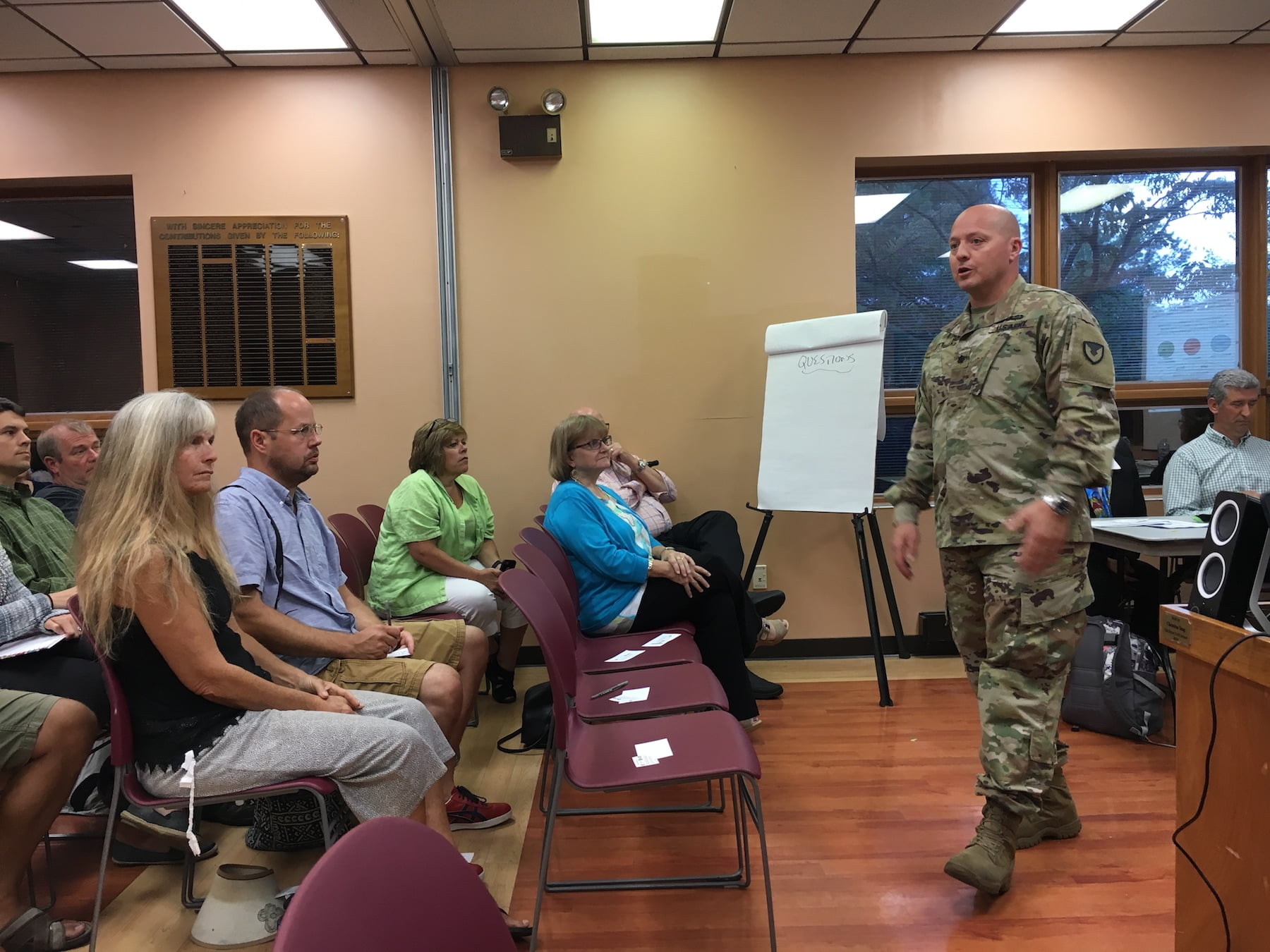
Lt. Col. James Scott spoke about the EPA results of open burning drone testing at a community meeting at the Christiansburg Library Wednesday night. It was his first public appearance since taking over as commander of the RAAP in June.
The results from EPA drone testing of open burning sites at the Radford Army Ammunition Plant have many citizens concerned, but plant officials say the results yielded largely positive results.
The drone testing was the first of its kind and was done through a partnership between the University of Dayton, U.S. Environmental Protection Agency and the U.S. National Science and Aeronautics Administration over a 10-day period last fall.
RAAP Deputy to the Commander Rob Davie said the results of the testing were comprised of the highest amounts of chemicals found through multiple burnings that were larger than what usually take place at the plant.
The results found that greater than 90 percent of the new emission factors are lower than previous tests indicated, with only five being higher. The higher-level emissions were from arsenic (37.5 times higher), cadmium (1.51 times higher), lead (five times higher), silver (six times higher) and chloromethane (2.3 times higher), but RAAP officials said that none of the products produced at the plant contain arsenic, which they believe appeared from the diesel fuel used in the open burnings.
Davie said that the results of the study will be used when applying to renew the open burning permit that expired in 2015.
“All of the emission factors will be evaluated as part of the Human Health and Ecological Risk Assessment. The next step in the permit renewal process is to work with the Virginia Department of Environmental Quality to complete the risk assessment and create permit conditions. New permit limits will not be developed until the risk assessment is complete,” said Davie.
Many people in attendance wondered why open burning is still taking place, especially since it had been illegal for decades unless a special permit is granted like the one the RAAP has. Officials not give specific answers, but rather focused on the future incinerators that are planned for the facility.
Designs for the facility that would eliminate 95 percent of the open burnings currently conducted will be 90 percent complete by the end of the year, but completion of the actual facility is still years away. Officials did not give a specific time frame and funding for the project has still not been secured.
Davie said that shipping the remnants for off-site burning is not feasible because transporting chemicals of that nature is too much of a risk if an accident were to happen.
Those in attendance were not happy with the RAAP’s inability to answer specific questions, including when the new incinerator would be completed. But due to the sensitivity of the information and following the Army’s chain of command, officials’ hand were tied.
“We understand the frustration, but we are trying to lean as forward as we can on this and be as transparent as we can possibly be,” Davie said.
Lt. Col. James Scott, who made his first public appearance since taking over as commander of the RAAP in June, said that he was happy with the testing and its results.
“We are pleased that the sampling technology worked and provides Radford
Army Ammunition Plant with a new data source,” said Scott. “Overall we’re pleased with the findings. When we have greater than 90 percent of our emission factors that are reduced, that’s good.”


